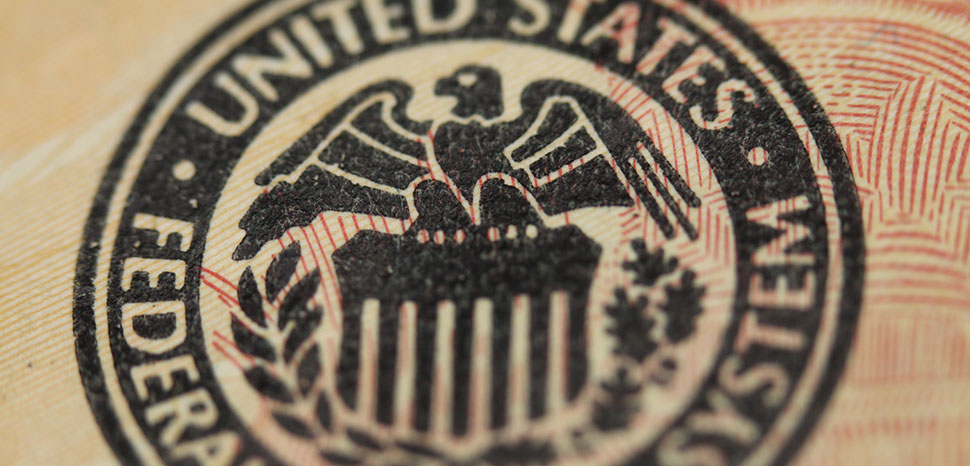Dr. Hippolyte Fofack

The release of the latest trove of data on the US economy provided plenty of good news: the country’s growth forecast is resilient; the labor market is buoyant, and inflation remains on its downward trajectory. The personal consumption expenditure (PCE) price index—the Federal Reserve’s preferred inflation measure—rose 2.6% over the 12 months ending in December, well below the 5.4% recorded at end-2022. (Remove volatile food and energy costs, and core PCE prices have been running at just 1.9%).
Momentum is thus building in favor of adjusting the central bank’s monetary policy stance to focus more on growth objectives and sustain the post-pandemic economic expansion. As tempting as such a policy move may be, hastily cutting interest rates is not a risk-free proposition even in the best of times. The risks are especially acute today given the state of our highly-geopoliticized, polycrisis world, in which supply-chain disruption has become a permanent feature of the global economy.
Though the US economy defied most economists’ expectations for a recession, recording growth of 2.5% in 2023 – the highest among advanced economies – the risk has not abated entirely, with sharp monetary tightening emerging as the major threat to a positive outlook.
Bringing inflation to heel without causing a recession was always a tall order, managing the tradeoff between price stability and financial stability. The previous year therefore represents a remarkable pendulum swing for the US economy, in stark contrast to the euro area, where the European Central Bank aggressively tightened monetary policy to combat inflation and growth was anemic at just 0.5%, weighed down by Germany which saw its economy contract by 0.3% in 2023.
Several factors helped keep the US economy on an expansionary track. First, and perhaps the most important, is the scale (more than 25% of GDP) of pandemic relief, infrastructure spending, and investment incentives.
Unlike during previous economic recoveries, US business investment has been particularly strong post-pandemic. Expressed as a percentage of GDP, business fixed investment has remained steady, at about the same level as in the pre-Covid years, a better outcome than any post-recession period since 1980.
Second, the ancillary benefits of increased government spending have also been keenly felt at the household and state levels. Preliminary analysis shows that state and local government spending has contributed more than twice as much to GDP over the last two years than over the preceding five years ending in 2021. And with the tight labor market sustaining wage growth, consumption spending has remained strong as well, contributing over 1.9 percentage points to the 3.3% expansion recorded in Q4 2023.
Having evaded a major economic downturn the new consensus among market analysts and some political leaders is an aggressive pivot toward rate cuts to provide further relief to businesses and sustain the growth momentum. Senator Sherrod Brown, the Chairman of the Senate Banking Committee, has urged Fed Chair Jerome Powell to dial back rate hikes, writing “restrictive monetary policy is no longer the right tool for combatting inflation.”
But despite the expected growth deceleration, the US economy is still expanding at a solid pace. Corporate earnings are expected to rise by more than 12% this year, and the latest survey from the University of Michigan shows that consumer confidence in the US economy has jumped by 29% since November, the greatest two-month surge since 1991. At the same time, impressive jobs growth in January 2024 has kept the US unemployment rate at a remarkably low level.
More ominous, however, is the threat of supply-chain bottlenecks, one of the main drivers of transitory inflation. These bottlenecks have created so much inflationary havoc over the last few years that they may not be transitory after all. Geopolitical shocks have dramatically increased commodity prices, which were the major drivers of inflationary pressures as illustrated by the dynamics of core inflation in recent months.
Already, Houthi attacks in the Red Sea are taking a toll on trade and have dramatically increased the average costs of transporting goods across the globe. As this latest episode illustrates, the world is always just one crisis away from further disruption to international supply chains.
Internal dynamics are also pointing to other sources of inflationary risk. Further price pressure cannot be ruled out in a strong economy contending with myriad structural supply constraints, such as labor shortages and declining productivity. These unknowns compound uncertainty about current inflation dynamics, necessitating a more cautious approach in the management of the growth-inflation tradeoff. Interestingly, investors in interest-rates futures markets were divided on whether the Fed should cut rates at its March meeting, and market-based probability of a March cut has fallen to around 35% since the Fed’s first FOMC meeting of the year last January.
Timing is everything when it comes to monetary policymaking, and the Fed has earned the right to make its next interest rate move at the time of its choosing as it navigates its way toward the neutral policy stance.
No comments:
Post a Comment